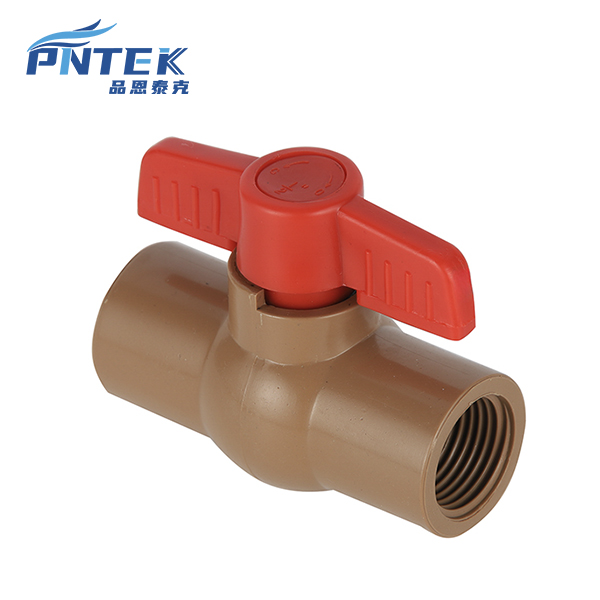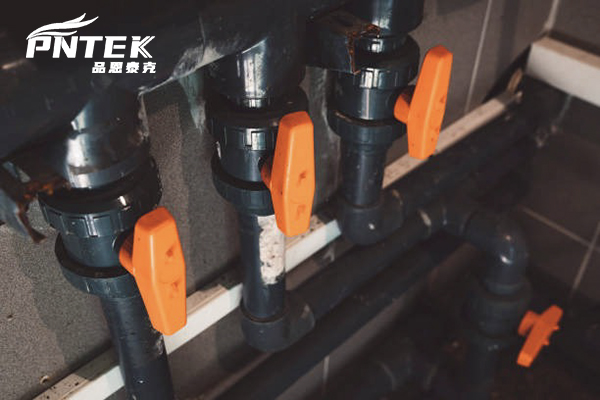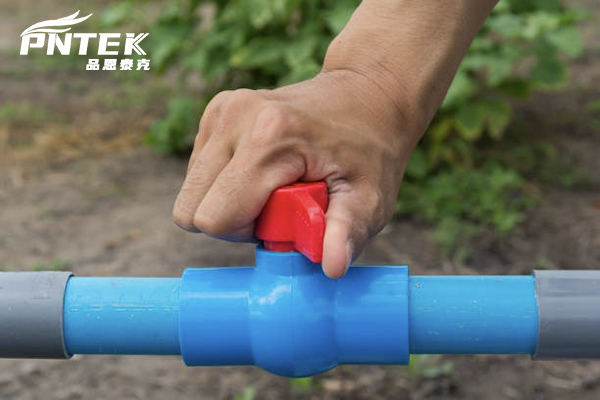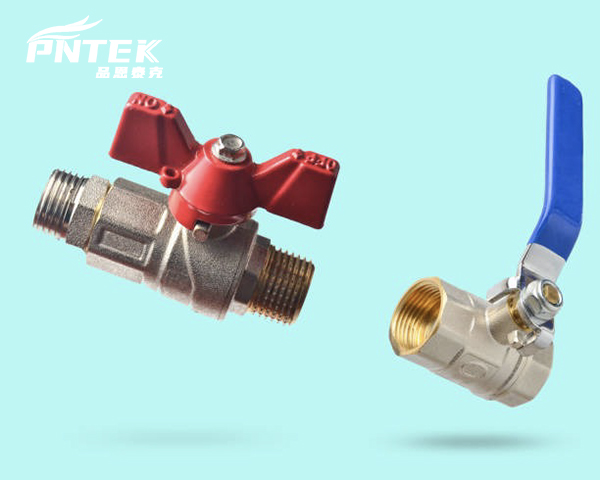Your client is asking for a lifetime guarantee on their new irrigation system. You need to know how long the PVC ball valves will actually last to manage their expectations accurately.
A high-quality PVC ball valve can last for many years, even up to 20 years or more, under ideal conditions. The actual lifespan depends heavily on UV exposure, chemical contact, water pressure, and how often it is used.

This is a question I discuss frequently with partners like Budi from Indonesia. He needs to provide reliable information to his customers, who range from large contractors to small retailers. The answer is not a single number. The lifespan of a PVC ball valve depends on several key factors. Understanding these factors is crucial for both selecting the right valve and for setting realistic expectations with end-users. It is about ensuring the product performs as promised for its entire service life.
What is the life expectancy of a PVC ball valve?
You are choosing valves for a critical project. You see manufacturer claims of hundred-year lifespans for PVC pipes, but you know a valve is much more complex and will fail sooner.
The life expectancy is typically determined by its moving parts and seals. While the PVC body can last for 50+ years, the seals (EPDM or FPM) and seat (PTFE) will wear out first, usually within 5 to 20 years depending on the application.

The PVC body of a well-made valve is very durable. Under normal conditions, buried or indoors away from sunlight, it can last for many decades, just like PVC pipe. However, a valve is not just a piece of plastic; it is a mechanical device. The real question is about the life expectancy of the parts that move and seal.
Key Factors Limiting Lifespan
Here are the primary things that determine how long the seals and seats will last. They are the true weak points in any valve system.
| Factor | Impact on Lifespan | How to Maximize Life |
|---|---|---|
| UV Exposure | Makes PVC brittle, weakens seals. | Install underground, in a valve box, or paint with a latex-based paint. |
| Chemicals | Aggressive chemicals degrade seal materials (EPDM, FPM). | Choose the correct seal material for the chemical (e.g., FPM for oils). |
| Pressure Fluctuation | Water hammer or constant pressure spikes stress the valve body and seals. | Install water hammer arrestors and operate below the max pressure rating. |
| Temperature | High temperatures soften PVC and accelerate seal aging. | Use a CPVC valve for hot water and stay within temperature limits. |
| Cycle Frequency | Frequent opening/closing wears out the ball seat and stem seals. | For high-cycle uses, choose a valve designed for automation. |
A valve used in a clean, low-pressure indoor water line might last for decades. The same valve in an outdoor chemical processing line might need its seals replaced every few years.
How often should you replace a PVC valve?
You have dozens of valves in your facility. Should you replace them on a fixed schedule, or wait for them to fail? A surprise failure could cause a major flood.
You should replace a PVC valve when it shows signs of failure, not on a fixed schedule. Regularly inspect for leaks, difficulty turning the handle, or visible cracks. Proactive replacement is only needed in highly critical applications.

This is a practical question Budi’s clients, especially those managing large facilities, often ask. The best answer is “inspect, do not guess.” A calendar-based replacement schedule is often wasteful. Instead, it is about knowing what to look for. For most applications like home plumbing or irrigation, this proactive inspection is the standard method. PVC valves usually fail slowly. They give you warning signs long before a catastrophic event.
Key Signs a Valve Needs Replacement
I train our partners to look for these three things during routine checks:
1. Leaks
This is the most obvious sign. A leak can come from three places.
- Stem Leak: Water drips from around the handle when you turn it. This means the stem O-rings are worn. On some of our high-end valves, these can be replaced, but on a compact valve, it signals replacement time.
- Union Leak: On a union ball valve, if water drips from the union nuts, the O-ring might need replacement or re-seating.
- Body Leak: A crack in the valve body itself. This is rare but very serious. It is usually caused by freezing or extreme physical impact. The valve must be replaced immediately.
2. Stiffness
The handle becomes very hard to turn. This usually means the PTFE seats have been damaged by debris or have swollen due to chemical exposure. The valve is no longer sealing properly.
3. Visible Damage
Look for chalking or yellowing on the surface from UV damage, and for any visible cracks, especially around the connection points.
Do PVC ball valves go bad?
You have a box of old PVC valves that have been sitting in the warehouse for years. Are they still good, or should you throw them away and order new ones?
Yes, PVC ball valves can go bad, but it happens very slowly. The main causes are UV exposure making the plastic brittle, and the internal seals drying out or hardening over time, even without use.

“Going bad” is a great way to put it. A valve does not just stop working one day. Its performance degrades over time. At Pntek, quality control is everything, and we study how and why failures happen to make our products better. Let’s look at the ways a valve can “go bad,” both in storage and in use.
Failure Modes of PVC Valves
1. UV Degradation
This is the number one enemy of PVC plastic. Sunlight’s ultraviolet rays break down the polymer chains in the PVC. The first sign is a change in color, but the real damage is structural. The plastic loses its flexibility and becomes brittle. A handle might snap off, or the body could crack under normal pressure. This is why it’s so important to protect outdoor valves.
2. Seal and Seat Failure
The seals (usually EPDM rubber O-rings) and seats (PTFE) are the most vulnerable parts.
- In Use: Abrasive particles in the water can scratch the ball and seats, causing leaks when the valve is closed. Chemicals can cause the seals to swell or become hard.
- In Storage: Even on a shelf, the rubber O-rings can slowly dry out and lose their elasticity over many years, especially in a hot, dry warehouse.
3. Freezing Damage
Water expands when it freezes. If water is trapped inside a closed PVC ball valve and freezes, the expanding ice will crack the body. This is a common failure in irrigation systems that are not properly winterized.
How long are ball valves good for?
You are comparing PVC valves to metal valves. You know metal is strong, but also expensive and can corrode. You wonder if PVC is a durable enough alternative for your application.
A PVC ball valve in a compatible, low-stress application can last for decades. However, a brass or stainless steel ball valve is better for high temperatures, high pressures, and applications with significant physical stress.

This is a broader question, but a very important one for purchasing managers who buy different types of valves. It is not about which material is “best,” but which is “right” for the job. While our expertise is PVC, it is important to be honest about its limits.
Comparing Valve Material Lifespans
Let’s compare the typical lifespan expectations for different ball valve materials under “good” conditions, such as clean water, moderate pressure, and regular use.
| Valve Material | Typical Lifespan | Main Advantages | Main Disadvantages (Causes of Failure) |
|---|---|---|---|
| PVC | 15-25+ years | Corrosion-proof, low cost, lightweight. | Low temperature/pressure limits, UV sensitive, can crack from impact. |
| Brass | 20-40+ years | Good temperature/pressure resistance, strong. | Can corrode from certain water chemistries (dezincification), heavy. |
| Stainless Steel | 40-60+ years | Excellent strength, high temperature/pressure resistance, excellent chemical resistance. | High cost, heavy. Can still corrode in high-chloride environments. |
A PVC valve is an excellent choice for a huge range of applications, especially in water management where metal would corrode. Its lifespan is very respectable, especially when you consider its low cost. My philosophy has always been to provide the best possible PVC solution. For everything else, a high-quality PVC valve made from 100% virgin material offers unbeatable value and reliability.
Conclusion
A quality PVC ball valve’s lifespan depends on its environment. With proper installation and material choice, it can provide reliable service for many years, often outlasting the equipment it supports.
Post time: Sep-15-2025




